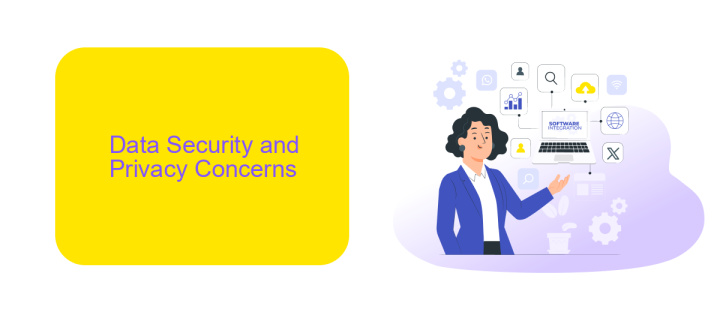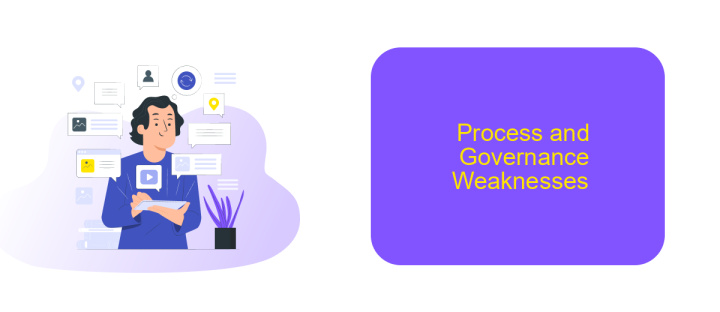Data Integration Risks
Data integration is a critical component of modern business operations, enabling seamless data flow across various systems. However, it comes with its own set of risks that can jeopardize data quality, security, and compliance. In this article, we will explore the potential pitfalls of data integration and offer strategies to mitigate these risks effectively.
Data Incompatibility and Quality Issues
Data incompatibility and quality issues are common challenges in data integration projects. These problems arise when data from different sources do not align properly, leading to inconsistencies and inaccuracies. Such issues can severely impact the reliability of integrated data, making it difficult to derive meaningful insights.
- Inconsistent data formats across sources
- Duplicate or missing data entries
- Data transformation errors
- Lack of standardized data quality checks
To mitigate these risks, it is crucial to employ robust data integration tools like ApiX-Drive. This platform offers seamless integration capabilities, ensuring that data from various sources is harmonized effectively. Additionally, ApiX-Drive provides automated data quality checks and transformation processes, which help maintain the integrity and consistency of the integrated data. By leveraging such tools, organizations can significantly reduce the likelihood of data incompatibility and quality issues, thereby enhancing the overall reliability of their data integration efforts.
Data Security and Privacy Concerns

Data integration poses significant security and privacy concerns, primarily due to the transfer and consolidation of sensitive information across various systems. Unauthorized access, data breaches, and exposure of personal information are potential risks that organizations must address. Ensuring robust encryption methods, secure access controls, and regular security audits are essential to mitigate these risks. Additionally, compliance with regulations such as GDPR and CCPA is crucial to protect user data and maintain trust.
Tools like ApiX-Drive can simplify the integration process while also providing essential security features. ApiX-Drive offers secure data transfer protocols and stringent authentication mechanisms, ensuring that sensitive information remains protected during integration. By utilizing such services, organizations can streamline their data workflows without compromising on security. However, it remains vital to continuously monitor and update security measures to address emerging threats and vulnerabilities in the data integration landscape.
Technical and Integration Challenges

Technical and integration challenges in data integration projects can significantly impact the success of an initiative. One of the primary technical challenges is ensuring data compatibility between different systems. This often involves dealing with varying data formats, structures, and standards.
- Data Mapping: Converting data from one format to another can be complex and error-prone.
- Scalability: Integrating systems must handle large volumes of data without performance degradation.
- Security: Ensuring data privacy and protection during transfer and storage is critical.
- Real-time Processing: Achieving seamless data flow in real-time can be technically demanding.
Tools like ApiX-Drive can help mitigate these challenges by offering automated data integration solutions. ApiX-Drive provides a platform that simplifies the process of connecting various applications and services, reducing the need for manual intervention and minimizing errors. By leveraging such tools, organizations can streamline their data integration efforts, ensuring more reliable and efficient data management.
Process and Governance Weaknesses

Inadequate process and governance frameworks can significantly hinder data integration efforts. Without clear protocols, organizations may face challenges in maintaining data consistency, accuracy, and security. These weaknesses often result in fragmented data systems, making it difficult to achieve a unified view of information.
Effective governance is essential for ensuring that data integration processes align with organizational goals. It involves establishing roles, responsibilities, and accountability measures. However, many organizations struggle to implement comprehensive governance structures, leading to inefficiencies and increased risk of data breaches.
- Lack of standardized procedures for data handling
- Inadequate oversight and monitoring mechanisms
- Unclear roles and responsibilities
- Insufficient training and awareness programs
Utilizing integration platforms like ApiX-Drive can mitigate some of these risks by providing automated and standardized data handling processes. Such platforms offer robust monitoring and management tools, ensuring that data flows are consistent and secure. By leveraging these technologies, organizations can enhance their governance frameworks and streamline their data integration processes.
Organizational and Cultural Barriers
Organizational and cultural barriers often pose significant challenges in data integration projects. Resistance to change is a common issue, as employees may be accustomed to existing systems and workflows. This resistance can stem from a lack of understanding or fear of new technologies. Effective communication and training are essential to mitigate these concerns and ensure a smooth transition. Additionally, aligning the integration goals with the organization's overall strategy can help in gaining broader acceptance.
Cultural differences between departments or teams can also hinder data integration efforts. For example, IT and business units may have different priorities and ways of working, leading to misunderstandings and conflicts. Establishing a cross-functional team that includes representatives from all relevant departments can foster collaboration and ensure that everyone's needs are considered. Tools like ApiX-Drive can facilitate this process by providing user-friendly solutions for integrating various data sources, thus bridging the gap between technical and non-technical stakeholders.
FAQ
What are the common risks associated with data integration?
How can data loss be prevented during integration?
What measures can be taken to address security vulnerabilities in data integration?
How do compliance issues arise in data integration, and how can they be mitigated?
What is the role of automation in reducing data integration risks?
Apix-Drive will help optimize business processes, save you from a lot of routine tasks and unnecessary costs for automation, attracting additional specialists. Try setting up a free test connection with ApiX-Drive and see for yourself. Now you have to think about where to invest the freed time and money!

